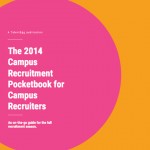There’s a new group of talent on the rise, and they’re markedly different from their predecessors.
Generation Z is entering the workforce – and employers are beginning to take notice.
Born from 1995 onwards, Gen Z brings a unique set of characteristics to the table. Although they share certain qualities with Gen Y (community-oriented, digital natives), their differences are game-changing for employers.
How are they different?
For starters, Gen Z is less optimistic about the future: they’ve witnessed the challenges faced by Gen Y (student debt, global recession) and are more realistic about their own trajectory as a result. Gen Z’s pragmatism has led many to believe that they are better prepared for the job market.
Gen Z is also more loyal than Gen Y: they generally believe they’ll work for fewer companies in their lifetime and don’t plan to job-hop as much as Gen Y.
Compensation is still a top priority, but Gen Z is reportedly less motivated by money than Gen Y. Instead, they are interested in opportunities for advancement and see learning and professional development as key to long-term success.
What does this mean for employers?
Engaging Gen Z will involve a more targeted approach, but the benefits of bringing them on board are incredibly worthwhile.
Gen Z has an inherent entrepreneurial spirit – they want to create, invent and impact society, and organizations can leverage their entrepreneurial nature to stay innovative and competitive.
Another Gen Z asset? Their outlook. Gen Z understand that their goals for the future are shaped by the reality of the world around them and begin to prepare for the workforce much earlier than Gen Y. This wisdom, coupled with their desire for professional growth and advancement, make Gen Z the ideal prototype for a strong, engaged and loyal workforce.
How can I target, attract and recruit Gen Z to my organization?
While there are similarities between Gen Y and Gen Z, recruiting the latter will require more attention to medium than message.
Gen Y talent are concerned with authenticity: they want to know your employer brand story, but aren’t overly concerned with how the message is delivered. Gen Z wants to find meaning too, but how they discover your story is just as important.
Gen Z is the multi-screen generation. They have no problem switching between numerous screens, a tendency that stems from their attention span: Gen Z consume bite-sized content, follow trends and communicate primarily through graphics (like emoticons) and images.
Looking to attract, target and recruit this new cohort? If you want to capture and hold their attention, your message has to reflect Gen Z’s preferences:
Social
Although they are both adept and active on social media, Gen Z is cited as being more fluent with the internet than Gen Y. This is because Gen Z has always grown up in a connected world and is able to navigate the digital world with intuitive ease (the same could be argued for Gen Y, though many at the top of Y’s generation bracket remember life before Facebook).
Gen Z can be found different social channels than those before them: Snapchat, Secret and Ask.fm are more popular with this group than Twitter or Facebook. These social platforms are appealing to Gen Z who values some degree of digital privacy and anonymity.
Maintaining an active, effective presence on new platforms can be a gamble, but your team can experiment with emerging tools before deciding whether to dedicate more time and resources.
For example, you could try using Snapchat’s Stories feature to engage with Gen Z. Snapchat is a mobile sharing app that allows users to share photo or video messages that are only available for a set time limit once opened (they then automatically delete themselves). Content created on Snapchat can be enhanced through text, emoticons or doodles, appealing to Gen Z’s preferred communication style.
Snapchat’s Stories allows brands to make content available for up to 24 hours. It is a great feature to utilize when creating content around workplace culture: you can create standalone stories that give Gen Z a glimpse into everyday life at your organization, or use the feature to create teasers directing to additional content (like recruitment videos).
Mobile
Gen Y and Gen Z are both big mobile phone users, but Gen Z’s devices have always been “smart”. Growing up in the golden age of mobile technology, Gen Z is accustomed to responsive design, innovative apps and seamless user experiences. They quickly jump on the latest mobile trends (think entertainment network ShowMobile or social good tracker We365) but are swift to reject outdated, lackluster attempts.
Gen Z live on their mobile phones and rely on their devices for a variety of tasks, from connecting with family to gaming with friends. Searching and applying for meaningful career opportunities is quickly becoming the next big thing Gen Z hope to accomplish with their phones.
One way to utilize the mobile space for recruitment is to ensure your online presence is optimized for mobile viewing. TalentEgg is completely optimized for mobile devices and features a responsive design that enables our student and grad network to access job listings, employer profiles and career content on-the-go.
When you partner with TalentEgg, your online presence (including your job listings and custom editorial content) will already be formatted for mobile, allowing Gen Z users to easily navigate and engage with your brand from their handheld screens. They’ll have instant access to your brand and you’ll be top of mind.
Discussion: How will you engage with Gen Z talent?






Leave a Reply
You must be logged in to post a comment.